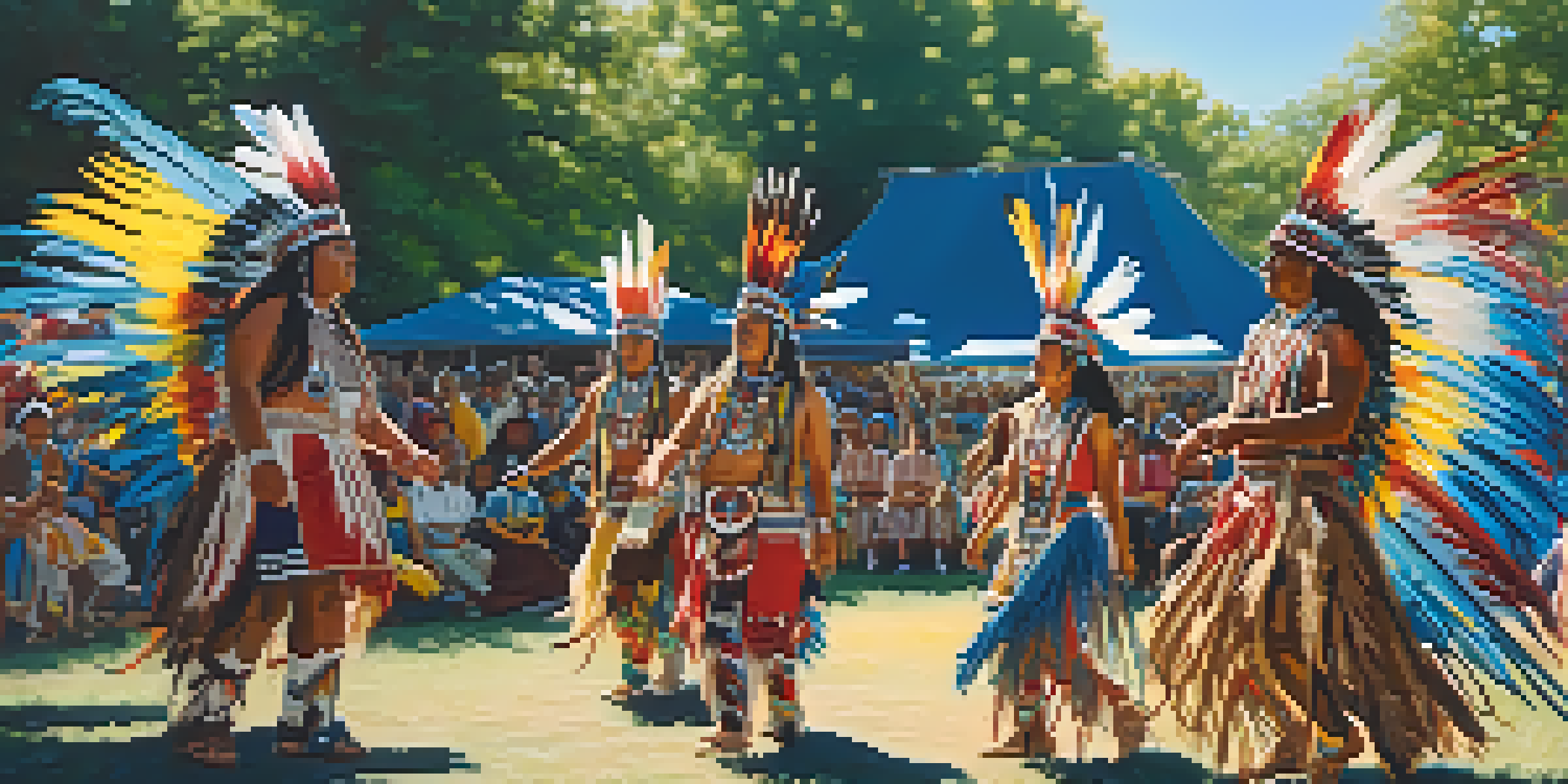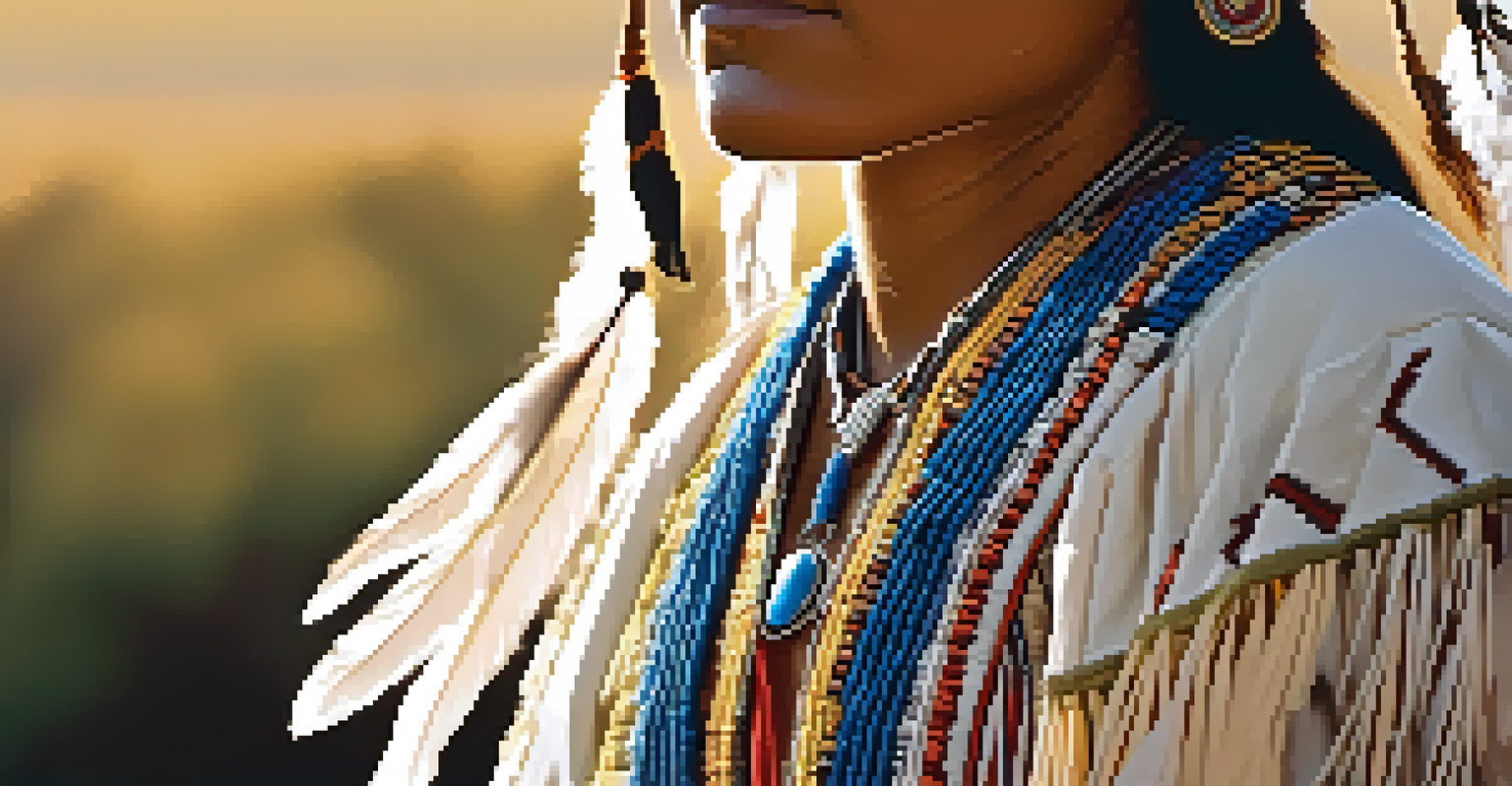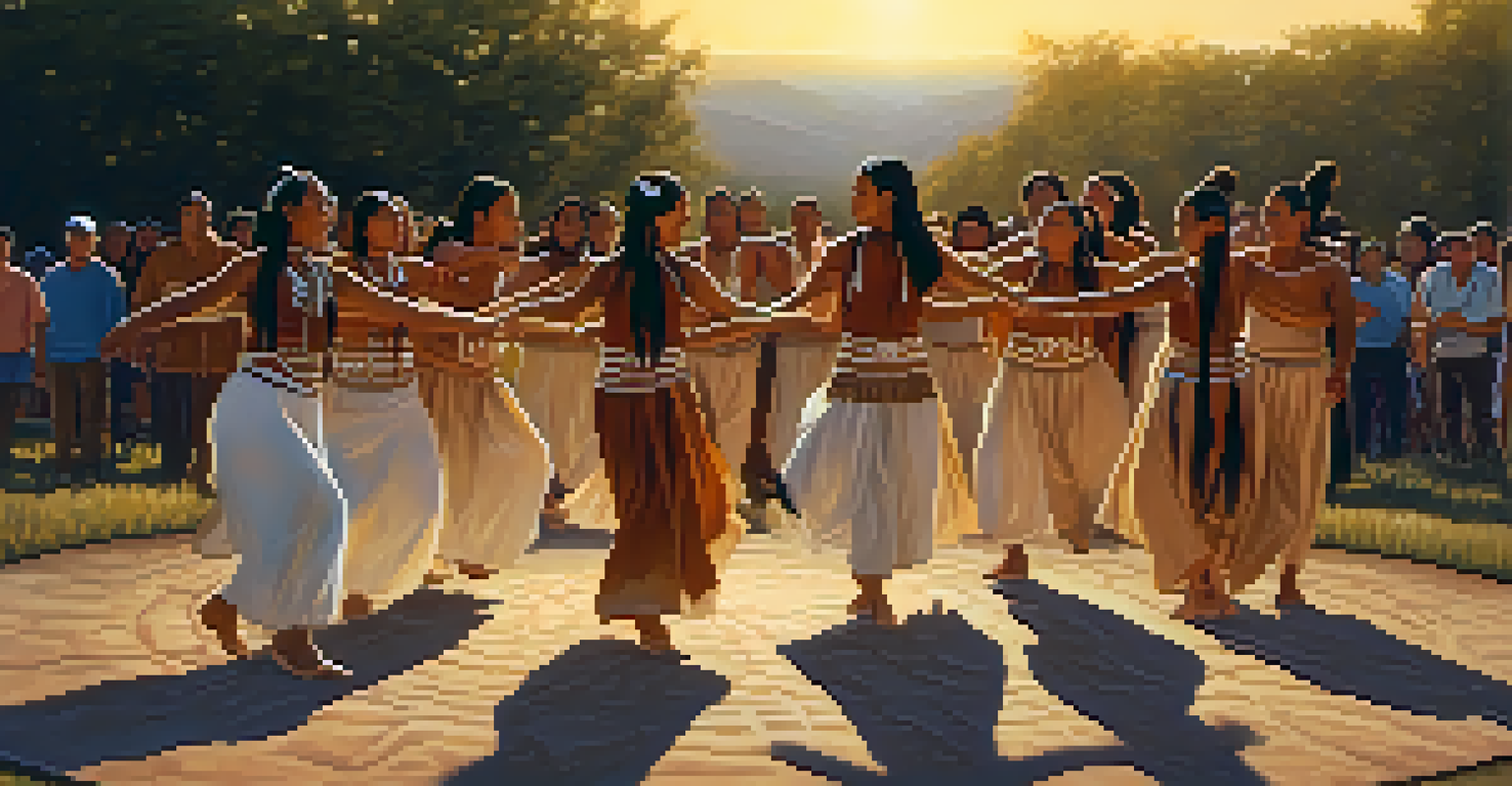The Significance of Dance in Native American Cultural Practices

Understanding the Cultural Context of Dance
Dance in Native American cultures is more than just a form of art; it is a vital expression of identity and community. Each tribe has its unique dances that reflect their history, beliefs, and the natural world. For example, the Hopi tribe performs the Snake Dance to invoke rain, highlighting the deep connection they have with nature.
Dance is the hidden language of the soul.
These dances often tell stories, conveying ancestral wisdom and values through movement. The rhythms and steps are a way to connect with the past, and they serve to pass down traditions to younger generations. In this way, dance becomes a living history, keeping the tribe's heritage alive.
Moreover, the communal aspect of dance fosters unity among participants. Dancers come together to celebrate significant events, reinforcing social bonds and shared cultural identity. This collective experience is essential for maintaining the fabric of Native American communities.
Spiritual Significance of Dance in Rituals
Many Native American dances are deeply spiritual, serving as a form of prayer or offering to the Creator. These dances are often performed during ceremonies, such as healing rituals or harvest celebrations, and are believed to invite positive energy and blessings. For instance, the powwow is a vibrant gathering where various tribes come together to dance and honor their spiritual beliefs.

The intricate movements and specific songs used in these dances have profound meanings, often derived from ancient stories and teachings. Participants embody the spirits of their ancestors, creating a bridge between the physical and spiritual realms. This connection highlights the belief that dance can facilitate communication with the divine.
Dance Reflects Cultural Identity
In Native American cultures, dance serves as a vital expression of identity, storytelling, and community connection.
Ultimately, the spiritual significance of dance underscores its role in fostering a sense of belonging and purpose. It is an act of devotion that helps individuals and communities reaffirm their faith and commitment to their cultural practices.
Dance as a Means of Storytelling
In Native American cultures, dance serves as a powerful storytelling medium. Each movement, rhythm, and costume detail contributes to a narrative that conveys important cultural lessons and historical events. For example, the Lakota's Wolf Dance tells the story of the wolf's significance in their ecosystem and spiritual beliefs.
The dance is a poem of which each movement is a word.
Through dance, performers illustrate their tribe's values, struggles, and triumphs, making history accessible and engaging. This form of storytelling allows the audience to connect emotionally with the content, fostering empathy and understanding. It’s a way to keep the past alive and relevant.
Additionally, the visual and auditory elements of dance create a multisensory experience that captivates audiences and helps them grasp complex concepts. This method of communication transcends language barriers, making it an effective tool for sharing Native American culture with others.
The Role of Dance in Community Identity
Dance plays a crucial role in shaping and expressing community identity within Native American tribes. Group performances, such as traditional powwows, not only celebrate cultural heritage but also provide a platform for individuals to showcase their unique identities. When dancers wear their traditional regalia, they embody the stories and symbols of their ancestors.
These communal dance events foster a sense of belonging and pride among participants. They serve as gatherings where people can reconnect with their roots and reinforce social ties. The act of dancing together solidifies their shared identity, reminding them of their collective history and cultural significance.
Dance as Spiritual Practice
Many Native American dances function as spiritual rituals, fostering a connection to the divine and reaffirming cultural beliefs.
Moreover, dance allows tribes to assert their identity in the face of external challenges. By actively preserving and performing their dances, Native American communities assert their resilience and commitment to their cultural heritage, ensuring that their identity remains vibrant and visible.
Healing Through Movement and Dance
Dance is often used as a therapeutic tool in Native American cultures, promoting emotional and physical healing. Certain dances are believed to possess healing powers, helping individuals overcome grief, trauma, or illness. For example, the Sun Dance is a ritual that includes physical endurance, symbolizing sacrifice and renewal.
The rhythmic movements and communal participation create a safe space for individuals to express their emotions and find solace. Engaging in dance allows participants to release pent-up feelings, fostering personal healing and growth. This aspect highlights the holistic approach to health that many Native American cultures embrace.
Additionally, by participating in these healing dances, individuals strengthen their connection to their community and culture. This reinforces the idea that healing is not just an individual journey but a collective one, where support and shared experiences play vital roles.
Preservation of Traditions Through Dance
As modernization and globalization continue to influence the world, dance serves as a vital means of preserving Native American traditions. Many tribes are actively working to teach younger generations the importance of their traditional dances, ensuring that these practices do not fade away. This passing down of knowledge is crucial for cultural survival.
Dance workshops, classes, and community events are increasingly popular, creating opportunities for youth to engage with their heritage. These initiatives not only teach the steps and movements but also the stories and meanings behind each dance. This educational aspect reinforces cultural pride and awareness among younger members of the tribe.
Preserving Traditions Through Dance
As modernization impacts indigenous cultures, dance remains crucial for teaching younger generations about their heritage and ensuring cultural survival.
Moreover, the revival of traditional dances has gained popularity in recent years, with many tribes showcasing their heritage at cultural festivals. These events not only celebrate their history but also educate outsiders, fostering a broader understanding of Native American cultures and their significance.
The Global Influence of Native American Dance
Native American dance has transcended its cultural boundaries, influencing artists and performers worldwide. Through cultural exchanges and collaborations, elements of Native American dance have found their way into contemporary dance forms, enriching the global arts landscape. This blending of styles promotes a greater appreciation for the diversity of cultural expressions.
As Native American artists take their dance to international stages, they share their stories and traditions with broader audiences. This exposure helps to raise awareness about Native American cultures and the significance of dance within them. It also opens up dialogues about cultural appropriation and respect for indigenous practices.

The impact of Native American dance on global culture is a testament to its resilience and adaptability. By embracing their roots while engaging with the world, Native American dancers continue to inspire and educate, ensuring that their cultural practices remain relevant in a rapidly changing society.